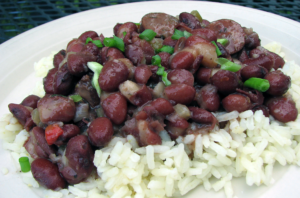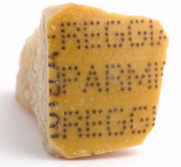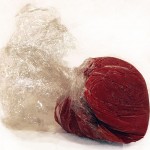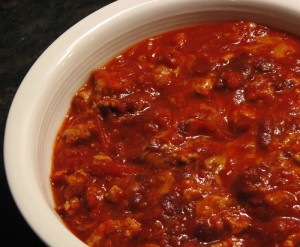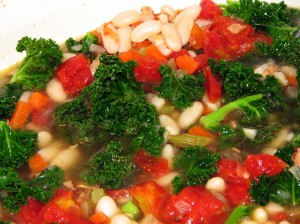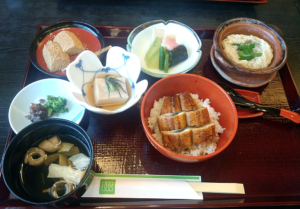 Japanese Cooking – History, Health Benefits and Recipes
Japanese Cooking – History, Health Benefits and Recipes
Japanese cooking (Japanese cuisine, also known as “Washoku” 和食 (和食 – 和 meaning ‘Japan’ or ‘harmony,’ 食 meaning ‘food’ or ‘to eat’), has become increasingly popular worldwide for its healthy and delicious dishes. Washoku is a combination of traditional Japanese cooking techniques and modern influences and it refers to the classic Japanese cuisine that focuses on the harmony of ingredients that are both visually appealing and nutritious. In this blog post, we’ll briefly explore the history of Japanese cooking, its health benefits and share four easy-to-make Japanese recipes.
Ever since my fascination with Asian cooking began, I’ve ordered everything I need from Weee!, a great website for buying Japanese ingredients (and all Chinese, Korean, Vietnamese, Filipino and Indian ingredients) at prices that are almost always less than Amazon and Brick and Mortar stores. And if you use this link, you’ll get $20 off your first two orders and free delivery for orders over $49! They offer an incredible array of high-quality ingredients (including everything needed for the recipes below…in fact, everything you need for every recipe), from miso paste and soy sauce to seaweed and rice vinegar, at competitive prices. Their website is easy to use and navigate, and their mobile app is even more convenient. You can find everything you need and make a purchase with just a few clicks. With Weee!, you can be assured that you are getting authentic Japanese ingredients delivered right to your doorstep, saving you time and effort from going to physical stores. Plus, they offer fast and reliable shipping, making it a great option for those who may not have access to Japanese markets in their local area. Overall, Weee! is a fantastic choice for anyone looking to elevate their Japanese cooking game with high-quality ingredients.
History of Japanese Cooking
Japanese cuisine dates back to the Jomon period, around 10,000 BC. During this time, people lived as hunter-gatherers and used fire to cook their food. The introduction of rice cultivation during the Yayoi period (300 BC – 300 AD) marked a significant change in Japanese cuisine. Rice became a staple food, and people began using soybeans to make miso and soy sauce.
During the Heian period (794-1185), Japanese aristocrats began hosting elaborate banquets, where food was not only served but presented as an art form. This era also saw the introduction of Buddhist vegetarianism, which influenced the development of meat-free dishes such as shojin ryori.
The Edo period (1603-1868) was a time of peace and prosperity in Japan, and it marked the development of modern Japanese cuisine. During this period, sushi and tempura were invented, and the use of chopsticks became widespread.
Today, Japanese cuisine is a fusion of traditional and modern cooking techniques. It is heavily influenced by regional ingredients, such as seafood in coastal regions and vegetables in mountainous areas.
Health Benefits of Japanese Cooking
Japanese cuisine is known for its health benefits. Many dishes are low in calories and high in nutrients, making them an excellent choice for those looking to maintain a healthy diet. Here are some of the health benefits of Japanese cooking:
- High in Nutrients: Japanese dishes are often made with nutrient-rich ingredients such as seafood, tofu, and vegetables. These ingredients are high in vitamins, minerals and antioxidants that are beneficial for overall health.
- Low in Calories: Japanese cuisine is known for its low-calorie dishes. Many Japanese dishes are steamed or grilled, which helps to preserve the nutrients in the food while keeping the calories low.
- Heart-Healthy: Japanese cuisine is also known for its heart-healthy dishes. The use of fish and soy products, such as tofu and miso, is associated with a lower risk of heart disease.
- Boosts Immunity: The use of fermented foods, such as miso and pickles, is common in Japanese cuisine. These foods contain beneficial bacteria that help to boost the immune system.
- Fresh, seasonal ingredients: Japanese cooking is known for its use of fresh, seasonal ingredients. This means that the dishes are not only healthier, but they also taste better.
- Low in processed foods and unhealthy fats: Japanese cooking is also low in processed foods and unhealthy fats. This makes it a good choice for people who are looking to improve their overall health and well-being.
- Beautiful and intricate dishes: Japanese dishes are often works of art, and they can be a joy to both eat and look at. This is one of the reasons why Japanese cuisine is so popular with foodies all over the world.
- A great way to learn about Japanese culture: When you cook Japanese dishes, you are not only learning about the ingredients and cooking methods, but you are also learning about the history and traditions of Japan. This can be a great way to connect with your heritage or to learn about another culture.
3 Easy-to-Make Japanese Recipes
Now that we’ve briefly covered the history and health benefits of Japanese cuisine, let’s get to the fun part – cooking! Here are four easy-to-make Japanese recipes that you can try at home: Read More …
